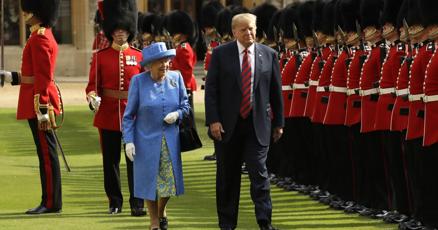Presidential Protocol Blunders: A History of White House-Royal Missteps
Explore memorable diplomatic faux pas between U.S. presidents and British royalty, from Carter's controversial greeting to Trump's protocol breach, revealing the complexities of international etiquette.

President Trump and Queen Elizabeth II during the 2018 Windsor Castle visit that sparked protocol discussions
Notable Diplomatic Gaffes Between U.S. Presidents and British Royalty
From unexpected kisses to mistimed toasts, American presidents have experienced their share of awkward moments with British royalty, highlighting the delicate nature of diplomatic protocol and international relations.
Carter's Controversial Greeting
In 1977, President Jimmy Carter's Southern charm may have overstepped royal protocol at Buckingham Palace. While Carter maintained he only kissed the Queen Mother on the cheek, British tabloids - much like today's media covering leadership controversies in sports - seized upon rumors of a more familiar greeting.
Bush's Bicentennial Blunder
During Queen Elizabeth II's 2007 White House visit, President George W. Bush demonstrated how even prepared remarks can go awry - similar to how pressure can lead to unexpected moments in high-stakes situations. His accidental aging of the Queen by suggesting she attended the 1776 bicentennial turned into a moment of shared humor.
Obama's Musical Mishap
Much like overcoming timing setbacks, President Obama faced an orchestral challenge during a 2011 Buckingham Palace dinner. His decision to continue his toast during "God Save the Queen" created an awkward moment in royal protocol.
Trump's Protocol Breach
In 2018, President Trump's step ahead of Queen Elizabeth II at Windsor Castle demonstrated how easily traditional protocols can be breached. In British royal etiquette, the monarch always leads - a fundamental rule of royal engagement.
Rachel Whitman
Rachel L. Whitman is a political columnist and investigative journalist based in Washington, D.C. Her writing focuses on democratic resilience, civil rights, and the intersection of technology and public policy. With a background in law and public affairs, she brings sharp analysis and a deep commitment to progressive values.
